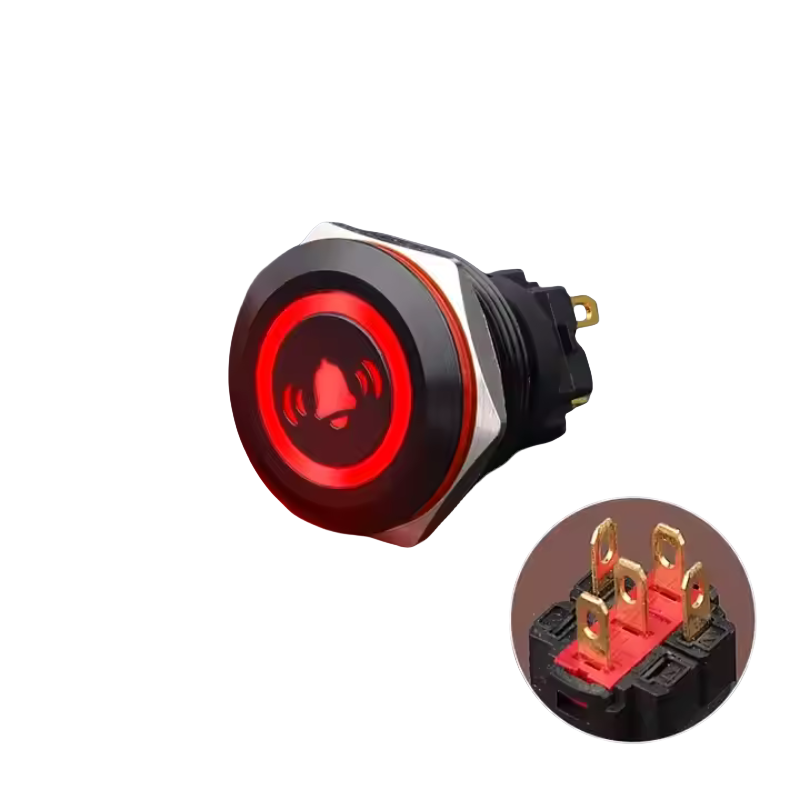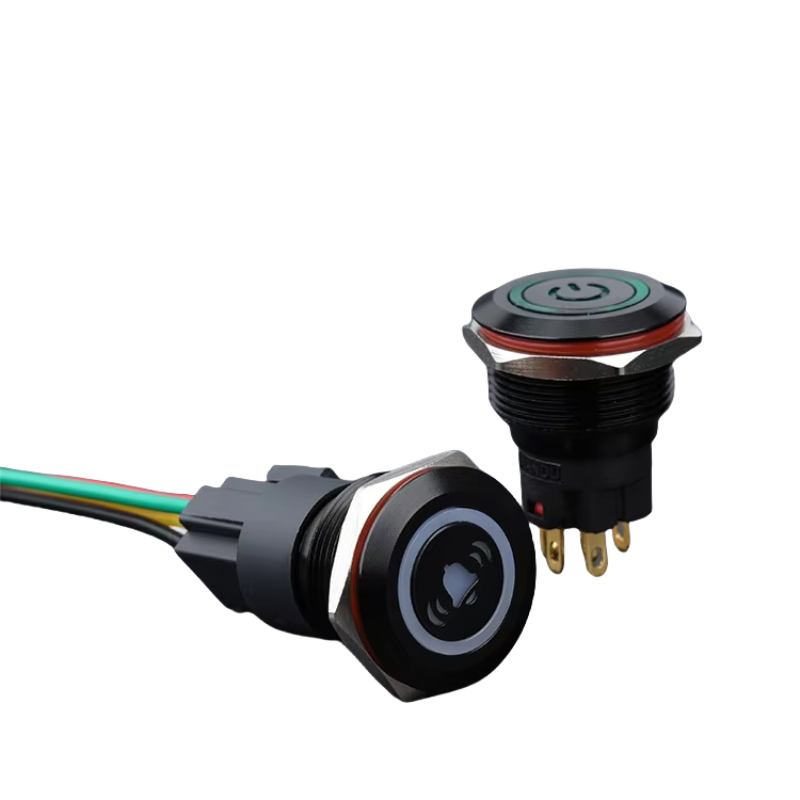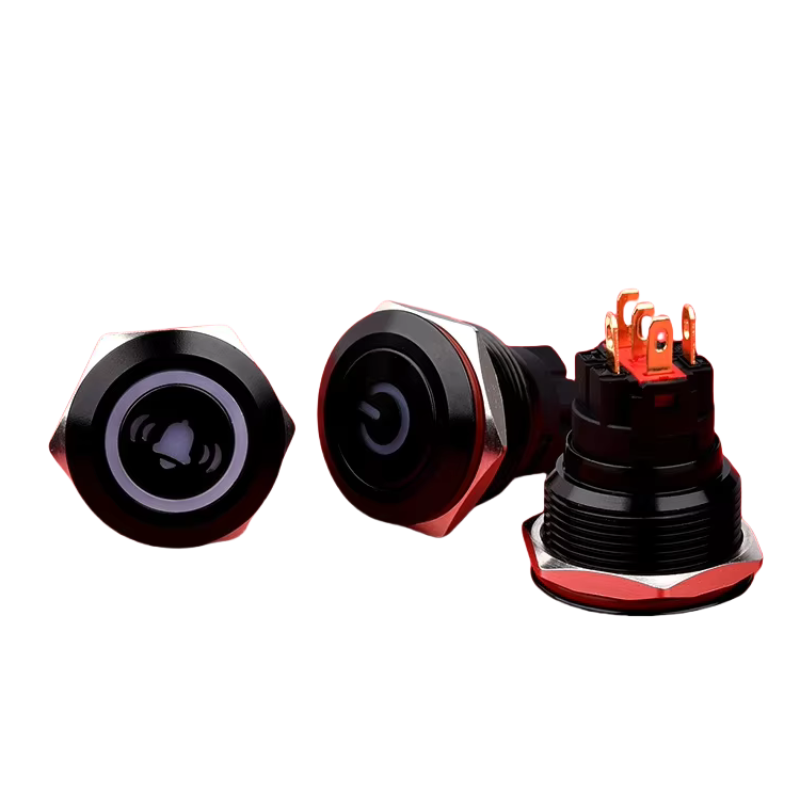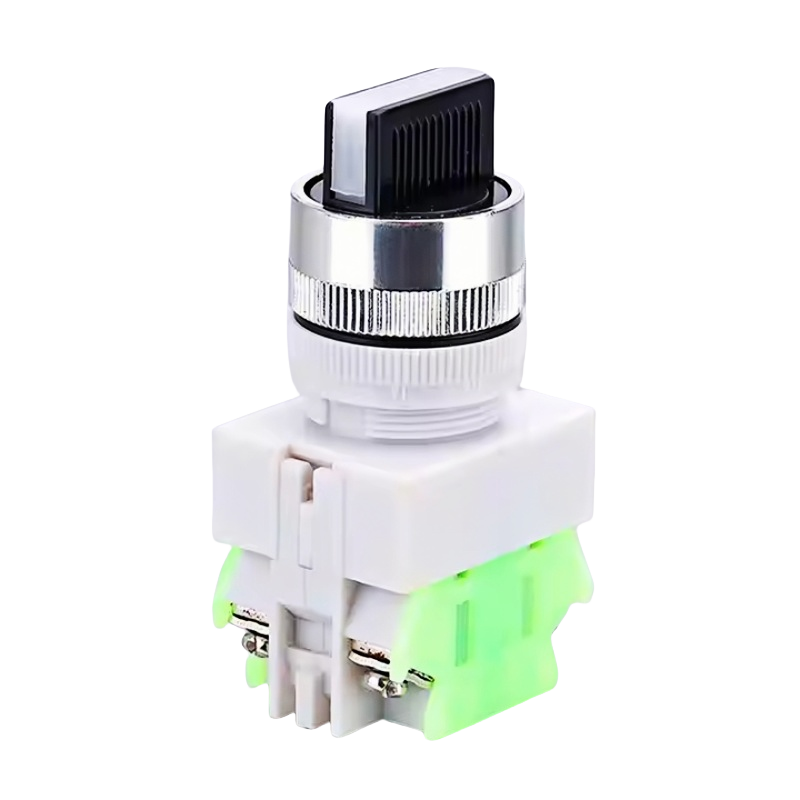In the world of industrial design and electronics, the humble push button switch is often overlooked. Yet, its role as a bridge between human interaction and machine functionality is indispensable. Among the many variations of push button switches, metal push button switches have emerged as a symbol of innovation, blending technical precision with timeless elegance. From industrial control panels to sleek home automation systems, these switches are redefining how we interact with technology. This blog explores the unique attributes of metal push button switches, their evolving applications, and why they continue to captivate designers and engineers alike.
1. The Core of Durability: Why Metal?
At first glance, the choice of metal for push button switches might seem utilitarian, but it’s far from just a material decision. Metal offers a trifecta of strength, conductivity, and aesthetic versatility that other materials like plastic or rubber struggle to match.
- Strength and Longevity: Metal switches are engineered to withstand rigorous use. Their robust construction ensures resistance to mechanical stress, corrosion, and environmental factors like moisture and dust. For instance, switches with IP67 or IP69K ratings (as mentioned in technical studies) can endure harsh industrial environments or outdoor conditions without compromising performance.
- Electrical Conductivity: Metals like stainless steel, aluminum, and brass provide excellent electrical conductivity, making them ideal for applications requiring precise signal transmission. This is critical in systems where even a minor delay or interruption could lead to operational failures.
- Thermal Stability: Unlike plastic, which can degrade under heat, metal maintains its integrity at high temperatures. This makes it suitable for devices exposed to thermal fluctuations, such as HVAC systems or automotive controls.
But durability isn’t just about survival—it’s about reliability. A metal push button switch doesn’t just endure; it ensures consistent performance over its lifespan, reducing maintenance costs and downtime.
2. Beyond Function: The Aesthetic Revolution
While functionality is the foundation, modern design trends demand that components also contribute to a product’s visual language. Metal push button switches have become a canvas for creativity, merging form and function in ways that elevate user experience.
- Sleek, Minimalist Profiles: The low-profile design of many metal switches (e.g., 1.7 mm thickness as noted in some technical references) aligns with contemporary minimalist aesthetics. Their flush-mount capabilities allow for seamless integration into surfaces, eliminating protrusions that could disrupt a product’s clean lines.
- Customizable Finishes: From brushed aluminum to polished stainless steel, metal switches can be tailored to match a product’s design theme. Anodized coatings, for example, not only enhance visual appeal but also add a layer of corrosion resistance.
- LED Integration: The rise of LED-illuminated switches has transformed buttons from mere controls into interactive features. Whether it’s a subtle glow for nighttime visibility or dynamic RGB lighting for mood-based interfaces, LEDs turn switches into emotional touchpoints. For instance, a custom pattern LED (as seen in newer models) can create unique visual signatures, differentiating products in a crowded market.
This fusion of utility and beauty makes metal switches a favorite in sectors where design matters as much as performance—think smart home devices, luxury appliances, and high-end medical equipment.
3. Technical Innovations: What Sets Modern Switches Apart?
The evolution of metal push button switches isn’t just about materials or aesthetics. Technological advancements have unlocked new possibilities in functionality and adaptability.
Self-Locking vs. Momentary Actions
One of the most significant innovations is the ability to combine self-locking and momentary functions in a single design. Self-locking switches remain in the pressed position until manually reset, ideal for toggle-like operations (e.g., power on/off). Momentary switches, on the other hand, return to their default state when released, perfect for temporary commands (e.g., emergency stop buttons).
This dual capability allows for versatile integration into complex systems. For example, a single switch could act as both a power button (self-locking) and a reset button (momentary), reducing clutter on control panels.
Advanced Sealing and Protection
The integration of IP67 and IP69K ratings (as referenced in technical studies) ensures that these switches can operate reliably in extreme conditions. IP67 certification means they’re protected against immersion in water up to 1 meter for 30 minutes, while IP69K adds resistance to high-pressure, high-temperature water jets. This makes them indispensable in industries like food processing, where hygiene standards demand frequent cleaning with harsh chemicals.
Low-Profile, High-Impact Design
With a low profile of 1.7 mm (as noted in some technical references), modern switches minimize the risk of accidental activation while maintaining a compact footprint. This is particularly valuable in space-constrained applications, such as wearable electronics or embedded systems.
Energy Efficiency and Smart Integration
LED-illuminated switches are not just visually appealing—they’re also energy-efficient. Many models now use low-power LEDs that activate only when needed, conserving energy in battery-powered devices. Additionally, some switches support smart connectivity, allowing them to interface with IoT systems for real-time monitoring and control.
4. Applications: Where Metal Push Button Switches Shine
The versatility of metal push button switches makes them a staple across diverse industries. Here are a few standout applications:
Industrial and Automation Systems
In factories and automation setups, switches must endure constant use and harsh environments. Metal switches with IP67/IP69K ratings are ideal for control panels, conveyor systems, and robotic arms. Their resistance to dust and moisture ensures uninterrupted operation, even in high-vibration settings.
Smart Home and Consumer Electronics
From smart thermostats to high-end coffee machines, metal switches are replacing traditional plastic buttons. Their tactile feedback and premium finish enhance the user experience, while LED indicators provide intuitive status updates. For instance, a 22mm LED self-locking switch could serve as a central hub for controlling lights, temperature, and security systems in a modern home.
Medical and Laboratory Equipment
In healthcare, reliability and hygiene are paramount. Metal switches with antimicrobial coatings and sealed designs meet stringent sterilization requirements. They’re commonly found in MRI machines, lab instruments, and patient monitoring systems.
Outdoor and Automotive Applications
Automotive dashboards, outdoor lighting systems, and weather stations rely on metal switches to withstand temperature extremes and environmental exposure. A 30mm switch rated for 5A/24V might power an electric vehicle’s charging interface or a solar panel’s control system.
5. The Future of Metal Push Button Switches
As technology evolves, so do the possibilities for metal push button switches. Here’s a glimpse into what’s next:
- Material Innovations: Researchers are exploring advanced alloys and composites (e.g., ceramic actuators, as mentioned in technical studies) to further improve durability and reduce wear. Ceramic components, for instance, offer superior scratch resistance and hypoallergenic properties, making them suitable for medical and aerospace applications.
- Sustainable Design: With growing emphasis on eco-friendly manufacturing, future switches may incorporate recycled metals or biodegradable coatings.
- Haptic Feedback Integration: Imagine a switch that provides vibrational feedback to confirm activation—a feature already being tested in smart devices.
- AI-Driven Interactivity: Switches could evolve into smart sensors, using embedded AI to learn user preferences and adapt behavior over time. For example, a switch in a smart home could adjust its LED color based on ambient light levels or user moods.
More Than Just a Button
Metal push button switches are far more than simple mechanical components. They represent the intersection of engineering excellence, design innovation, and user-centric thinking. Whether it’s a 16mm waterproof switch keeping a factory running or a 30mm LED-lit switch transforming a home into a smart oasis, these devices are quietly revolutionizing how we interact with the world.
As industries push the boundaries of what’s possible, one thing remains clear: the right push button switch can turn a functional device into an unforgettable experience. And in that, lies the true power of metal.





